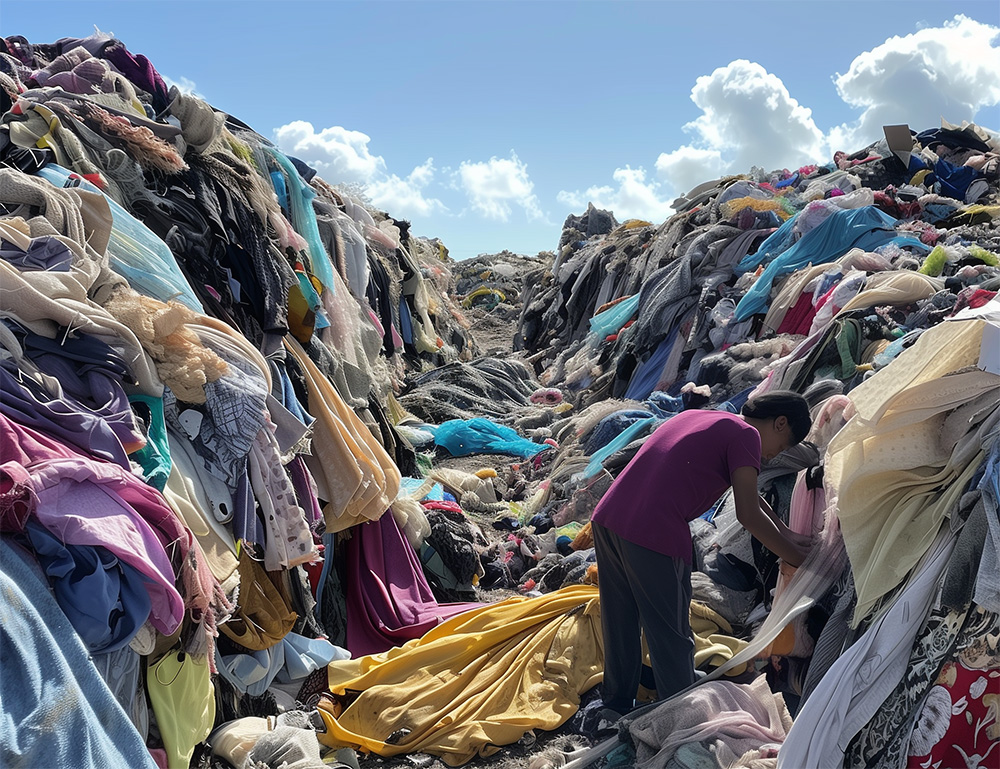Address
304 North Cardinal
St. Dorchester Center, MA 02124
Work Hours
Monday to Friday: 7AM - 7PM
Weekend: 10AM - 5PM
Address
304 North Cardinal
St. Dorchester Center, MA 02124
Work Hours
Monday to Friday: 7AM - 7PM
Weekend: 10AM - 5PM

The well-intentioned act of donating used clothing to developing countries carries complex repercussions that extend far beyond the initial act of charity. This practice, while aimed at reducing waste and aiding those in need, often leads to detrimental economic and environmental impacts in the recipient countries.
One of the most significant challenges posed by the influx of used clothing is the undermining of local textile industries. As markets are flooded with inexpensive second-hand garments from developed countries, local manufacturers and retailers find it increasingly difficult to compete. The saturation of these low-cost items can lead to reduced demand for domestically produced goods, potentially stalling the growth of local industries and leading to job losses (Fabric Fits).
From an environmental perspective, the transportation of massive quantities of clothing internationally is highly carbon-intensive. In 2018, the United States generated approximately 292.4 million tons of municipal solid waste (MSW), a notable portion of which comprised textiles that ultimately contribute to this global flow of used clothing (US EPA).
Once these garments reach their destination, not all are sold or used; a substantial amount ends up in landfills, exacerbating waste management challenges in countries that may already be struggling with efficient waste processing systems. In 2018, textiles accounted for over 11 percent of MSW landfilled in the United States, illustrating the scale at which these materials are discarded (US EPA).
The number of times a garment is worn has declined by around 36% in 15 years.
The statistics from the EPA highlight the sheer volume of waste generated and the complexities of managing it sustainably. In 2018 alone, textiles contributed significantly to both the combusted waste (16 percent) and the landfilled waste (over 11 percent), indicating the high level of resource utilization associated with clothing production and disposal (US EPA).
Recycling and composting rates for materials like textiles remain relatively low compared to other materials, suggesting a gap in the sustainable management of these products. In 2018, only about 32.1 percent of MSW was recycled or composted, down from 35 percent in previous years, pointing to a need for improved recycling practices across all material types, including textiles (US EPA).
Addressing these challenges requires a multifaceted approach. Increasing awareness of the impacts of clothing donations and promoting local recycling initiatives can help mitigate the negative effects on local economies and environments. Moreover, supporting policies that encourage the development of local industries to handle and repurpose these donations could provide economic benefits while managing the environmental impact.
In conclusion, while the donation of used clothing might seem like a straightforward act of charity, it is essential to consider the broader implications of such practices. By reevaluating how we manage and distribute used clothing, we can move towards more sustainable and beneficial solutions that support global environmental goals and economic development in recipient countries.